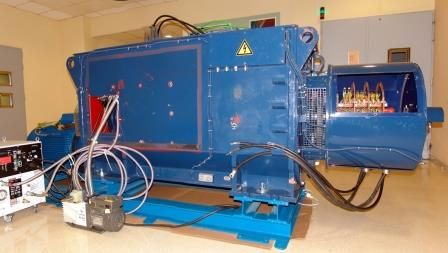
23/02/2017
A Superconducting Electrical Generator in ICMAB
A Superconducting Electrical Generator in ICMAB
The Institute of Materials Science of Barcelona (ICMAB-CSIC) on the UAB campus, which has an agreement with the Barcelona Synchrotron Park to facilitate park companies’ access to its science and technology facilities, jointly with Gamesa Innovation and Technology, a leading Spanish technology company in the wind energy industry and the Institute of Materials Science of Aragón (ICMA-CSIC-UNIZAR), have successfully completed the first phase of development of the first medium speed superconducting generator to be used in conventional medium power wind turbines (2MW).
Remember that superconducting materials have the remarkable property to transport electricity without producing heat thanks to an absence of electrical resistance. This class of singular materials has been known by physicists for a long time but the technology transfer challenge is still there: this first prototype (see picture) as the result of four years of collaboration between the three entities is great news.
The advantages of this new type of electric generator compared to the conventional generators are diverse: it simplifies the entire mechanical structure of the wind turbine as well as the electronic system; simplifies assembly and maintenance, reduces the risk of breakdowns; the time of intervention for maintenance is extended; and, in the near future, the cost will be reduced according to the rapid evolution of superconducting materials.
The future implementation of this type of electric superconducting generator in the wind turbines opens a new perspective to the wind energy industry, making windmills more efficient and robust and reducing the costs of energy production.
Congratulations and fair winds!
Remember that superconducting materials have the remarkable property to transport electricity without producing heat thanks to an absence of electrical resistance. This class of singular materials has been known by physicists for a long time but the technology transfer challenge is still there: this first prototype (see picture) as the result of four years of collaboration between the three entities is great news.
The advantages of this new type of electric generator compared to the conventional generators are diverse: it simplifies the entire mechanical structure of the wind turbine as well as the electronic system; simplifies assembly and maintenance, reduces the risk of breakdowns; the time of intervention for maintenance is extended; and, in the near future, the cost will be reduced according to the rapid evolution of superconducting materials.
The future implementation of this type of electric superconducting generator in the wind turbines opens a new perspective to the wind energy industry, making windmills more efficient and robust and reducing the costs of energy production.
Congratulations and fair winds!
More news
13/04/2023
Panattoni acquires 60,000 sqm land plot to build a data center
16/09/2021
Battery technology in the Barcelona Synchrotron Park environment
06/09/2021
Advances in the creation of a state-of-the-art microscopy platform at the Alba Synchrotron
22/07/2021
IBM, the big blue of technology at the Barcelona Synchrotron Park
02/07/2021
SENER, cutting-edge engineering and technology in the Barcelona Synchrotron Park
11/06/2021
Parc de l'Alba: first injection of landfill gas into the distribution network









